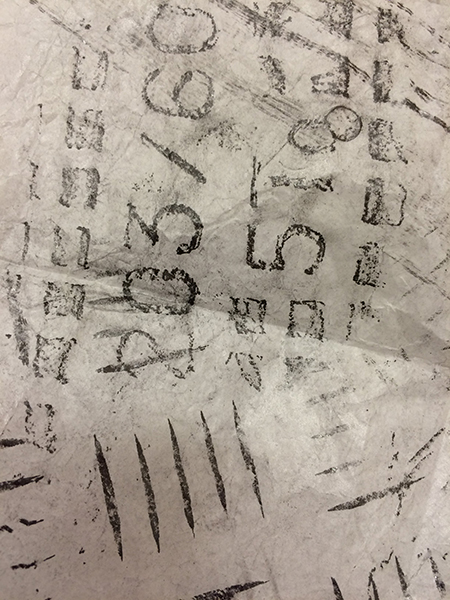
Expressive Arts and Complex Mental Health
Expressive Arts Therapy is a form of therapy that utilizes and embraces the energy of the arts in its many forms. It provides an inroad to understanding ourselves from a subconscious and intuitive place. With the guidance and witnessing presence of a trained expressive arts therapist, clients tap into their senses, innate imagination and curiosity. Doors are opened to self-exploration, the processing of emotions, finding understanding and compassion for self and others and self-soothing. This form of therapy sensitively supports the treatment of complex mental health issues from a non-pathologizing and strength-based perspective. Not only is it ideally suited for treating challenging mental health issues from the bottom up such as trauma and PTSD, grief, depression and anxiety, the expressive arts work well with all ages, populations and abilities.
An expressive arts therapist sensitively guides clients through a process of expression offering them opportunities to discover alternative possibilities and perspectives to personal issues, to gain clarity, sense hope and find beauty in suffering. Clients learn to recognize the relationship between their art making and real-life issues and allow resources to emerge out of difficulty. It is important to note that challenges within art making arise much like in real life and that given the option, clients can make choices for their artwork and for their life. Incorporating talk therapy alongside the art making encourages clients to speak plainly about their issues and helps clients to make connections between life experiences and how they feel, think and cope. Clients get to know themselves more deeply and learn to see for themselves what strengths they possess which ultimately restores their ability to make sense of their lives.
“But I’m Not Creative...” Let’s start with the core idea that this form of therapy supports and works within the framework of low skill and high sensitivity. Removing the stress of attempting to impress, the artwork produced through an expressive arts process is itself expressive and not dependent on aesthetic outcome or skill and talent. Stressing this model of creativity minimizes judgements from our inner critic and allows one to be fully engaged in the moment with the tools at hand. This opens the door to sensitivity and a meditative state that fully accesses our senses. We think, we smell, we touch, and we access our body felt senses, memories, thoughts and feelings in this form of activity. We stay attuned to the art-making process and to what is possible within the liminal space between the art maker, the artwork and the therapist.
You don’t have to be an artist or someone with any experience in the arts what-so-ever to benefit from expressive arts therapy, just a sense of curiosity and a willingness to be open and to explore.
A Typical Session I can’t speak for all expressive arts therapists, but a typical session generally begins with a verbal check-in where the client can voice how they are doing and what they might want to address in that particular visit. In a fluid session, the therapist looks for openings in the conversation where art making feels like the right avenue to dig deeper and to explore. A choice of art making supplies or modalities are made available so clients can start from where they feel most comfortable. The client can stay with the one modality like painting or drawing until it feels complete or segue into further art modalities for a deeper exploration. An example of this process can look like a series of words describing our painting evolves into a poem which is then enhanced by movement or dance in response.
Alternatively, clients may prefer to begin by intuitively tapping into their emotions and physical sensations through art making in any one modality and then verbally explore what arrived. The act of artmaking can facilitate and support the release of difficult emotions such as rage, sadness and fear. This energy can then dissipate resulting in a sense of catharsis. The therapist always remains present and attuned to the client in their process and holds the space for safety and support.
Once the artmaking feels complete, the results are explored. Together with the therapist, the client describes what art form was used and notices how and what the outcome looks like. This is called a phenomenological exploration and can be very illuminating. Clues from the actual subject matter as well as how the art was created can shed light on the presenting issues at hand. Personal connections are made to the resulting work and messages from the art are welcomed. The temptation to interpret is put aside - knowing and trusting that the artwork ultimately arrives in exactly the way it should.
Towards end the session, the client is given space and time to explore and understand how the art relates to the issue they brought to therapy and what they learned from this intuitive process.
The use of play, movement, visual arts and poetry to name a few are the methods by which clients, alongside their therapist, can freely explore possibilities and different outcomes. New shifts in experience or thinking can evolve with a willingness to go where one has not gone before or conversely to go over and over an issue until something new arrives. The capacity to shape our experience imaginatively is an essential part of being in the realm of expressive arts therapy.
The framework described above is generally loose and open to changing as it evolves. No two sessions look alike, and many therapists incorporate other forms of therapy in their process. Whether the arts are the main focus or a smaller component of a therapeutic hybrid, they are an incredibly intuitive, insightful and deeply meaningful component of a restorative and effective treatment for complex mental health issues.
Everyone, no matter what age, background, ability, or mental health challenge can benefit from this form of therapy. We all have an imagination and the potential to dream.
Treating Trauma with Expressive Arts Therapy Expressive Arts Therapy is particularly effective when working with trauma both recent and long buried. It can connect to painful memories and give voice to what’s often unspoken or unreachable. When implicit memories and trauma are embedded in our bodies, the expressive arts offer a form of telling without talking. The sensory qualities of the arts are key to helping individuals communicate traumatic memories and act as a bridge to their trauma narrative.
If the trauma was sudden or recent, the arts can be used as forms of self-soothing to calm the nervous system and to emotionally and cognitively process what happened so suffering isn’t long-term. This allows the mind and the body work together by integrating neurobiology with the emotional, spiritual and physical self.
Much like other trauma-informed and evidence-based treatments, Expressive Arts Therapy can help clients move from suffering to surviving and thriving by building the capacity to self-soothe, self-regulate and encourage a solid sense of self. Clients learn what it feels like to have compassion for themselves along with a stronger sense of resilience which sets the stage for recovery.
Expressive Arts and Anxiety Some of the causes and risk factors for developing anxiety can be rooted in experiencing stressful or traumatic life events or there may be a family history of anxiety disorders. From a developmental perspective, one could have had a difficult childhood where basic needs for love and attention weren’t met. Parents aren’t always capable or emotionally equipped, due to their own issues, to provide the emotional or physical needs of their children. These early attachment experiences can contribute to feeling unsafe and anxious throughout one’s developing and adult life.
Through gentle questioning and art making with an attuned therapist, safety in session is established. Calm and comforting avenues to self soothe are developed ensuring clients feel safe enough to be able to process difficult emotions and memories in and out of session. This process helps strengthen personal agency, sense of control and ability to cope with anxious feelings that often arise. Stress ultimately gets reduced and self-compassion is enhanced.
Sustainable relief from fear and anxiety is possible through the expressive arts.
Treating Depression with the Expressive Arts We all feel sad at times and that’s to be expected. These feelings generally lift after a while but when depression sinks in and feels like it never will go away it can become a struggle to get motivated to do anything. Sleepless nights or sleeping way too much and not be able to get out of bed can be indicators of a significant depressive episode. With depression irritability creeps in and relationships suffer.
At times like these everyone needs someone to talk to. Someone who won't judge them or tell them to “snap out of it”. They really need support, so they don't feel all alone in the depths of despair. Expressive arts therapy offers a meditative, contemplative and soothing way to express and share sad feelings. Engaging with art materials in one-on-one therapy or in groups can inspire creativity and confidence that lifts depression. People who engage in the arts can find relief from depression through playing or making music, drawing, painting, working with their hands with clay, textiles or writing. These activities touch the soul and inspire confidence ultimately lifting depression. Clients struggling with depression can learn to live in the moment and enjoy life again.
Grief and the Expressive Arts When grief is the issue, whether it is anticipatory, bereavement or complicated grief, expressive arts therapists will develop an individualized treatment plan that could stem from a desire to maintain bonds with the deceased or needing to focus on the change in life circumstances or both. Self-soothing techniques are explored to find what is most helpful. They could look like the creation of a cathartic ritual to say goodbye or paying tribute by recognizing and celebrating the value of these important people in one’s life and how they will be missed. This plan can also include a legacy project should you wish to create a tangible memory for yourself or your loved ones before death. The power of any and all art making forms can be harnessed for the relief of the pain of grief.
Either way, through expressive art processes, one can learn to how to cope and find new ways of being. Grieving persons will learn that they can experience pain without falling apart, that they’re resilient, sensitive and capable of living with loss gracefully. They will surface from the depths of despair with room to breathe.
In Closing Expressive Arts Therapy, though decidedly not the norm in terms of therapeutic practices, is finding a toehold in formal, traditional hospital settings and clinical environments. More and more medical professionals are beginning to incorporate the arts as part of a holistic treatment plan for their patients because they see the benefits and know that treating the heart and soul of a person improves their wellbeing and overall mental health.
It has been my experience with encounters and meetings with medical professionals that they are open to new ideas and treatments for difficult patients. They are finding that traditional approaches to therapy don’t always have the all the right answers and see the merits of expressive art therapy as a continuum of their own practice or as a valuable asset in their library of evidence-based and alternative therapies. It is always valuable to have resources to fulfill the varied needs of clients. Unfortunately, not all medical professionals and systems give credence to this area of study and that is an obstacle to overcome over time. Distinguishing between arts-based psychotherapy and arts & crafts activities not based in therapy is a step in the right direction.
I believe that as a therapist I am part of this bigger picture – offering treatment choices and alternatives. Working in this capacity and providing measurable results makes a difference in people lives and offers healing and support in a balanced approach to medical care. The evidence is there.



